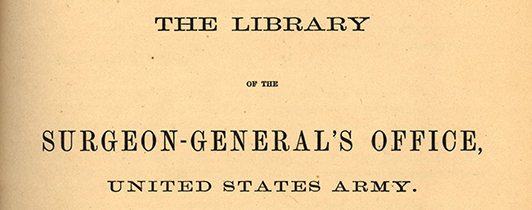The elements and attributes described in this document are defined in the eTKeVK2RecordSet.dtd and are used in the eTKeVK2 XML output files. The eTKeVK2RecordSet.dtd is available at https://www.nlm.nih.gov/databases/dtd/nlmetkevk2recordset_130401.dtd
An alphabetical list of all element names and their attributes in the eTKeVK2RecordSet.dtd is available at https://www.nlm.nih.gov/hmd/indexcat/etkevk2_elements_alphabetical.html.
Structure of the eTKeVK2RecordSet.dtd:
The eTKeVK2RecordSet.dtd defines a XML structure for records in eTKeVK2. At the highest level, the DTD requires a root element named "eTKeVK2RecordSet". The <eTKeVK2RecordSet> root element is comprised of one or more instances of the top-level <eTKeVK2Record> element, and may optionally contain one instance of the top-level <DeleteeTKeVK2Record> element.
The <DeleteeTKeVK2Record> element is present in the <eTKeVK2RecordSet> when records have been deleted from eTKeVK2. The <DeleteeTKeVK2Record> element contains only the unique identifier of each deleted record and is defined more fully at the end of this document.
Structure of the element descriptions in this document:
Following a description of <eTKeVK2Record> parent element, this document continues with descriptions of its 15 child elements based on the alphabetical order of the eTKeVK2 XML file. The <eTKeVK2Record> child elements are numbered for convenience and readability.
Each of the 15 numbered sections includes the following information, if applicable:
- Required indicates Yes/No whether or not the element is required to appear within its parent envelope
- Repeatable indicates Yes/No whether or not the element can be repeated within its parent envelope
- Attributes are applied to an element to provide additional information about that element
- Child elements are elements contained within a parent element envelope
- A brief description of the element and its content
- Examples -
- In most cases, multiple examples are given within the Example(s) section. When an example shows multiple occurrences of the same element without intervening blank lines, the intent is to demonstrate that the element repeats within a single parent envelope. Examples with blank lines between multiple occurrences of the same element indicate distinct instances of that element from different parent envelopes.
Additional Information:
For more information about the eTKeVK2 collections and project history see - http://www.nlm.nih.gov/hmd/indexcat/aboutetkevk2.html and http://www.nlm.nih.gov/hmd/indexcat/aboutic.html
Descriptions
I. <eTKeVK2Record>
- Required: No
- Repeatable: Yes
- Attributes: Source, SourceNumber
- Child Elements: See numbered elements 1-15 below
<eTKeVK2Record>, a top-level or parent element within <eTKeVK2RecordSet>, encloses or envelopes a single record.
Example :
<eTKeVK2RecordSet> <eTKeVK2Record Source="Thorndike" SourceNumber="0002E"> <eTKeVK2ID>t0000230000</eTKeVK2ID> <Author> <LastName>Bad., Joh.</LastName> </Author> <Incipit>A est unum calidum per totum quod</Incipit> <Keyword>Logic</Keyword> <Location> <City>Vatican City</City> <Library>Biblioteca Apostolica Vaticana 4447</Library> </Location> <Pagination>ff. 299ra-309vb</Pagination> <PubDate>(15c)</PubDate> <SortData>t0000230000 Bad., Joh.. A est unum calidum per totum quod. (15c) </SortData> <TitleAlternate>Tract.</TitleAlternate> </eTKeVK2Record> </eTKeVK2RecordSet>
In the top-level element <eTKeVK2Record> there are two required attributes -
Source indicates if the data was originally from the electronic Thorndike and Kibre (eTK) or Voigts and Kurtz (eVK2) databases.
SourceNumber, indicates one of two numbering formats.
For records where <eTKeVK2 Record Source="Thorndike"> the element contains the column number of the original Lynn Thorndike and Pearl Kibre's A Catalogue of Incipits of Mediaeval Scientific Writings in Latin (TK) followed by a letter. In order to specify an entry in a column, a letter of the alphabet for each entry has been added to the column number, starting at the top of each column. The letter "o" is not used in entry designations so as to avoid confusion with zero. All records, even those which provide only cross-references, have been assigned a letter.
For records where <eTKeVK2Record Source="Voigts"> this element contains an essential number that has been used to identify texts in publications since the appearance of the Voigts and Kurtz (VK) CD-ROM format in 2000. Original VK numbers end in .00. Records subsequent to the 2000 CD end in extensions as .30, .40, etc.
-
- Required: No
Repeatable: Yes
Attributes: (none)
Child Elements: - <LastName>
Required: No
Repeatable: No
Attributes: (none)
<ForeName>
Required: No
Repeatable: No
Attributes: (none)
<Initials>
Required: No
Repeatable: No
Attributes: (none)
<Suffix>
Required: No
Repeatable: No
Attributes: (none)
<Role>
Required: No
Repeatable: No
Attributes: (none)
- <Author> is an envelope for the authorship of the resource. The following group of child elements is used:
- <LastName>A single form of the author name is cited in this element. In most cases, many variants of a given author name exist, and a range of variants has been provided for searching purposes in the separate pdf file (http://www.nlm.nih.gov/hmd/indexcat/pdf/tkvk-namelist.pdf). This element is not required as many texts are anonymous or the author has not been identified.
<ForeName> for future use
<Initials> for future use
<Suffix> for future use
<Role> used to indicate one of the following two values:
-
Attributed - where the validity of an author designation is in question or disputed.
Translator - identifies the translator of a work not originally written in Latin or English. Many Old English and Middle English texts are translations from Latin or French.
- Example(s):
- <Author>
- <LastName>Bad., Joh.</LastName>
- </Author>
- <Author>
- <LastName>Daniel</LastName>
- <Role>Attributed</Role>
- </Author>
- <Author>
- <LastName>Potano</LastName>
- <Role>Translator</Role>
- </Author>
Close Close All Open All - Required: No
-
-
Required: No
Repeatable: Yes
Attributes: (none)
Child Elements (none)
There can be up to ten <CrossReference> in any record. Each one sends the user to a similar or a related incipit. A <CrossReference> can also send the user to a record where a different incipit begins the text. In addition, when extra prologue or text incipit references are needed, they may be incorporated in this element.
Example(s):
<CrossReference>A primo pabulo salis medicinalis</CrossReference>
<CrossReference>Suffragare Trinitatis unitas / Unitatis miserere</CrossReference>
Close Close All Open All -
Required: No
-
- Required: No
Repeatable: Yes
Attributes: (none)
Child Elements: - <Year>
Required: Yes
Repeatable: No
Attributes: (none)
<Month>
Required: Yes
Repeatable: No
Attributes: (none)
<Day>
Required: Yes
Repeatable: No
Attributes: (none)
The <DateRevised> is the date when NLM updated the record.
- Example(s):
- <DateRevised>
-
<Year>2013</Year>
<Month>02</Month>
<Day>15</Day> - </DateRevised>
Close Close All Open All - Required: No
-
- Required: Yes
- Repeatable: No
- Attributes: (none)
- Child Elements: (none)
- The <eTKeVK2ID> is a 10 digit alpha-numeric identifier used to uniquely identify every record in eTKeVK2. It consists of the following segments:
-
position 1: Either 't' for eTK or 'v' for eVK2
position 2: zero as a placeholder
position 3-7: database record ID number
position 8-11: four zeros as placeholders
Example(s):
<eTKeVK2ID>t0000240000</eTKeVK2ID>
<eTKeVK2ID>t0001810000</eTKeVK2ID>
<eTKeVK2ID>v0000960000</eTKeVK2ID>
<eTKeVK2ID>v0007960000</eTKeVK2ID>
Close Close All Open All -
- Required: No
- Repeatable: Yes
- Attributes: (none)
- Child Elements (none)
There can be as many as five <GeneralNote> elements in one record. In the case where information additional to five elements is provided, the record is repeated, varying only in a few elements. Most bibliographical citations in this field are abbreviated. Expanded citations can be found in separate pdf files (for eTK https://www.nlm.nih.gov/hmd/indexcat/pdf/etk-bibl.pdf and for eVK2 https://www.nlm.nih.gov/hmd/indexcat/pdf/evk-bibl.pdf). Records created from a printed book have that information entered in this element.
This field is also used as a "notes" field for information that has come to light since the publication of the original Lynn Thorndike and Pearl Kibre's A Catalogue of Incipits of Mediaeval Scientific Writings in Latin (TK) or has been supplied by the electronic Thorndike and Kibre (eTK) database advisors. It should be emphasized that providing such additional information does not imply a complete revision of TK. An attempt to incorporate new information has been provided upon awareness of it.
See also <TitleAlternate>.
Example(s):
<GeneralNote>printed with Firmicus Maternua, Basel 1551, pp.74-78</GeneralNote>
<GeneralNote>no folio numbers</GeneralNote>
<GeneralNote>Cockayne 1864-1866</GeneralNote>
<GeneralNote>Leonhardi 1905</GeneralNote>
Close Close All Open All -
- Required: Yes
- Repeatable: Yes
- Attributes: (none)
- Child Elements (none)
<Incipit> provides the opening words of the text. No punctuation and only minimal capitalization have been retained from the original Lynn Thorndike and Pearl Kibre's A Catalogue of Incipits of Mediaeval Scientific Writings in Latin (TK). The incipit is not a unique identifier, as it can be repeated in subsequent records for additional information. Orthographic variants are addressed in a separate file (http://www.nlm.nih.gov/hmd/indexcat/pdf/etk-orthogvar.pdf). In some records this element will contain only cross-reference information.
Example(s):
<Incipit>A primo pabulo solis medicinalis sapentie</Incipit>
<Incipit>Genim brade bisceopwyrt and feld bisceopwyrt and greate wyrt and galluc</Incipit>
Close Close All Open All -
- Required: No
Repeatable: Yes
Attributes: (none)
Child Elements (none)
If a text has a separate prologue record, <IncipitPrologue> provides the incipit for that prologue, which will be found in an independent record with a different <eTKeVK2ID>. Prologues and texts at times circulated independently.
Example(s):
<Incipit>Absinthium calidum est in primo gradu</Incipit>
<IncipitPrologue>Quoniam disputationem simplicis medicine universaliter</IncipitPrologue>
Close Close All Open All - Required: No
-
- Required: No
Repeatable: No
Attributes: (none)
Child Elements (none)
If a prologue has a separate text record, this field provides the incipit for that text, which will be found in an independent record. Prologues and texts at times circulated independently.
Example(s):
<Incipit>A primo pabulo solis medicinalis sapenties</Incipit>
<IncipitText>Eisagoga cassia fistula</IncipitText>
Close Close All Open All - Required: No
-
- Required: No
Repeatable: Yes
Attributes: (none)
Child Elements (none)
There can be up to five <Keyword> in a record. In the case of more than five, the record is repeated and it varies only in the <Keyword> fields. <Keyword> have been supplied in eTKeVK2 from a controlled vocabulary of subjects, which is provided in a separate pdf file (http://www.nlm.nih.gov/hmd/indexcat/pdf/tkvk-subjectlist.pdf). These <Keyword> attributions are based for the most part on incipit and general bibliographic information, and should be taken only as suggestions. <Keyword> is also used to supply such descriptors as "Verse" or "Illustration," which are not, strictly speaking, subjects. Those texts for which no <Keyword> could be identified have been designated "Undetermined."
Example(s):
<Keyword>Recipes, medical</Keyword>
<Keyword>Regimen of health</Keyword>
<Keyword>Diet</Keyword>
<Keyword>Verse</Keyword>
Close Close All Open All - Required: No
-
- Required: No
Repeatable: No
Attributes: (none)
Child Elements (none)
Old English and Middle English are the two required languages designated and found in records where <eTKeVK2Record Source="Voigts">. <Language> is not found in records where <eTKeVK2Record Source="Thorndike">.
Example(s):
<Language>Middle English</Language>
<Language>Old English</Language>
Close Close All Open All - Required: No
-
- Required: No
Repeatable: No
Attributes: (none)
Child Elements: - <City>
Required: No
Repeatable: No
Attributes: (none)
<Library>
Required: No
Repeatable: No
Attributes: (none)
- <Location> is an envelope that indicates where the manuscript is held, the library collection and shelfmark. All records where <eTKeVK2Record Source="Voigts"> require this element, it is optional where <eTKeVK2Record Source="Thorndike">. The following group of child elements is used:
-
<City> - indicates where the manuscript is held. English spelling is used for city names. Where city names have changed since the publication of TK, the city names used are cited in Latin Manuscript Books Before 1600, 4th rev. ed., by Paul Oskar Kristeller and Sigrid Krämer (Munich: Monumenta Germaniae Historica, 1993). All records where <eTKeVK2Record Source="Voigts"> will contain this element.
<Library> - provides the library name, collection information (where known), and shelfmark or call number of the manuscript. Where library or collection names have changed since the publication of TK, the new designations from Kristeller and Krämer have been supplied. It has not always proved possible to identify a library when TK gives only a place-name. In some instances information from printed catalogues is also provided in this field.
- Example(s):
- <Location>
- <City>Cambridge</City>
- <Library>CUL Gg.3.28</Library>
- </Location>
- <Location>
- <City>London</City>
- <Library>Wellcome Library 46</Library>
- </Location>
Close Close All Open All - Required: No
-
- Required: No
Repeatable: No
Attributes: (none)
Child Elements (none)
<Pagination> provides inclusive foliation or pagination, where that information is available. This field can also contain information designating flyleaf texts, marginal texts, excerpts and an indication that the text is incomplete. <Pagination> is always required in records where <eTKeVK2Record Source="Voigts">
Example(s):
<Pagination>ff. 255-61v</Pagination>
<Pagination>single leaf (5 recipes) (incomplete)</Pagination>
Close Close All Open All - Required: No
-
- Required: Yes
Repeatable: No
Attributes: (none)
Child Elements (none)
<SortData> is comprised of data from <eTKeVK2ID>, <LastName>, <Incipit>, and <PubDate> if available. This element provides a method to allow one to sort the records in order.
Example(s):
<SortData>t0002030000 Absinthium calidum est in primo gradu. (14c)</SortData>
<SortData>t0002060000 Absinthium calidum in primo.</SortData>
<SortData>v0002620000 Lydgate, John. For health of body cover for cold?. (15c)</SortData>
Close Close All Open All - Required: Yes
-
- Required: No
Repeatable: Yes
Attributes: (none)
Child Elements (none)
This element indicates another title for the text which is in an additional record. Other titles may also be recorded in <GeneralNote>.
Example(s):
<TitleAlternate>De diebus et noctibus</TitleAlternate>
<TitleAlternate>Lorica</TitleAlternate>
Close Close All Open All - Required: No
II. <DeleteeTKeVK2Record>
- Required: No
- Repeatable: No
- Attributes: (none)
- Child Elements:
- <eTKeVK2ID>
- Required: Yes
- Repeatable: Yes
- Attributes: (none)
- <DeleteeTKeVK2Record> contains unique identifiers for those records in eTKeVK2 that were deleted since the last eTKeVK2 XML distribution.
- Example(s):
- <DeleteeTKeVK2Record>
-
<eTKeVK2ID>t0024580000</eTKeVK2ID>
<eTKeVK2ID>t0000510000</eTKeVK2ID>
<eTKeVK2ID>v0002610000</eTKeVK2ID>
<eTKeVK2ID>v0005493000</eTKeVK2ID> - </DeleteeTKeVK2Record>



